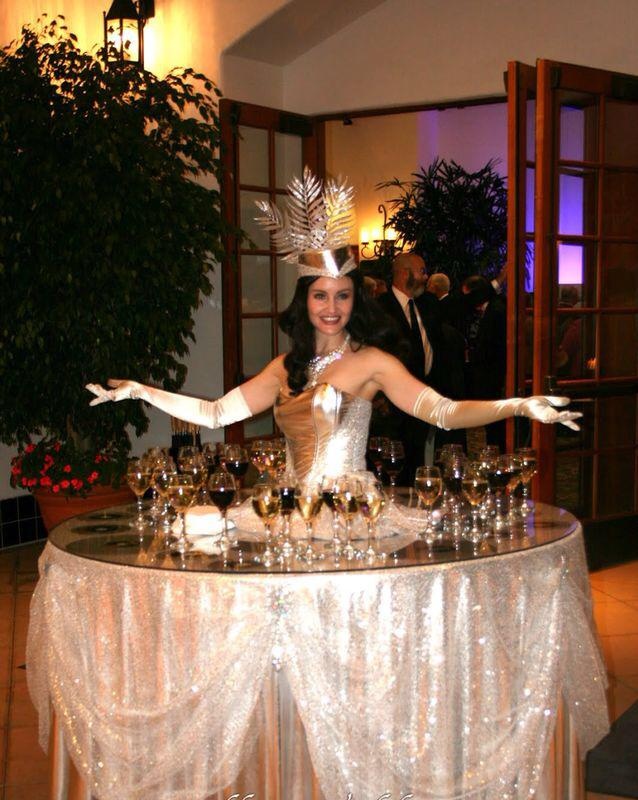Morgan Kane is not her real name. When she decided to share her story online, she chose a pen name. As many white girls working in India do – change their name for work.
I am not referring to shady or hanky-panky work – though some of the work borders in that area.
I am talking about legitimate though unusual work that white girls have started to pick up in India.
“Tonight, I am going to be a table! A human table wearing a glow in the dark fireman’s hat,” says Morgan Kane, one of the many white girls in Delhi, who pick up such odd jobs.
This is not human trafficking. Neither is it skin trade in its literal sense.
This trade is purely based on the colour of their skin, and probably gender.
Indians’ fascination for fair skin has found a new expression in the form of hiring white girls (European girls as they are known in India), mostly for ‘display’.
The trend is growing in the northern region of India, where it fuels the ego of the host as they show off their power and wealth by showcasing exotic girls at weddings and private parties.
The girls, who have gained nickname ‘white trash’, are used for everything from modelling to ‘elite guests’ and as bartenders at events, to add glamour quotient.
“Why do patrons feel that being seen to be able to afford to hire or associate with white women in some way improves their social status and perception of pecuniary wealth?” asks one such Morgan Jane in another media report.
According to the media report, these girls earn as much as Rs 10,000 (US$170) per day, with some events extending over many days. While it may not sound like big money in dollar terms, India’s low cost of living makes the pay attractive.
Two prejudices are at play here.
First, the British rule caused an inferiority complex among Indians. White skin began to be considered superior.
Second, which is a corollary of the first, hiring white girls gives a boost to status of the Indian host.
It could also be argued that getting Caucasian people to do odd jobs becomes some kind of a redemption for 200-years of British rule in India.
Life has come a full circle, it seems.
“Back in the days of empire, no colonial Indophile worth their salt would have been without their harem of Indian entertainers,” writes Morgan who worked as a human table at a wedding.
“From snake charmers to sitar players – imperialists loved to surround themselves with what, to them, seemed exotic. Today, the roles have been reversed – an irony I mulled as I stood there, laden with drinks.”
To be fair, white girls have always found work in India for many decades. Initially Bollywood provided them jobs as dancers for songs, and more recently they began to be seen as cheerleaders in the popular Indian Premier League.
Also, having humans as tables at events is neither a new concept nor a derogatory one. See Strolling Tables, a San Deigo Spotlight Entertainment website that provides theme-based human tables for events. The concept was popularised by Russians, and is widely used in the Middle East.
Even in India, it is Russians who are active in this “white girls” industry, as Morgan explains: “Some of the girls – from my experience, mainly Russians – work full-time on contracts. They get paid upwards of Rs 80,000 a month (£800 – not bad at all in India), as well as having their accommodation and living expenses covered.
“However, these girls are pretty much unable to refuse work, no matter where or what it is or how long it lasts.”
Many of these girls take up these high paying jobs at the risk of being attacked, abused, molested and even raped.
In a country where people are blatantly bombarded with fairness cream advertisements not only for women, but also for men, a rise of an entire industry based on skin colour is setting a dangerous precedent.
“As a white woman participating in this industry and a client paying them to do so, you are not only profiting but perpetuating an already well-established beauty myth that lighter skin is better,” says Morgan, who realises that she is also adding to the difficulties of local girls.
“I can hardly complain of exploitation as a result of my alabaster skin in a country where millions are exploited every day for having the “wrong” skin tone.
“The main inequity, I felt, wasn’t one suffered by me; it was that I was earning double the amount of the native Indian girls who were also working at the event. And why? Because I’m Western and white.”


Leave a Reply